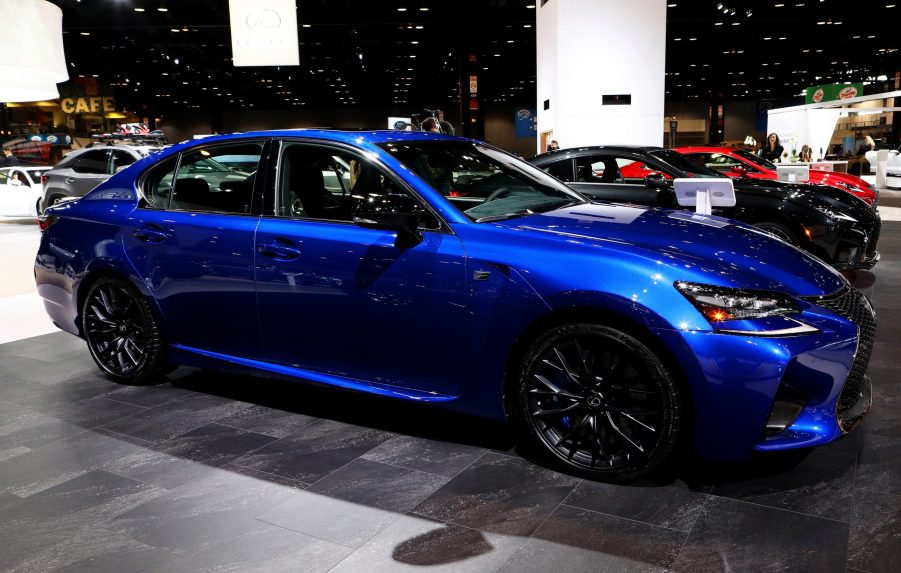
Lexus Sport Sedans: From IS F and GS F to IS500 F SPORT
Over the past decades, sports and luxury cars have gradually shifted from naturally aspirated to turbocharged engines. For automakers committed to pleasing the power-hungry masses, while satisfying tightening fuel economy standards, forced induction has been the go-to alternative. Until electrification, that is. Meanwhile, Lexus has been quietly cranking out all-motor sport sedans with gnarly 5.0-liter V8s. Here’s a rundown of the high-performance F models that are available with four doors and eight cylinders.
The IS F was the first Lexus F car back in 2008

Lexus debuted the F line in 2008 with a sport sedan called the IS F. By this time, displacement for its DOHC V8 engine series had grown over the years from the original 4.0 to 4.6, and finally 5.0-liters. With Yamaha-designed cylinder heads and 416 hp, the IS F delivered a thrilling drive and soundtrack. It was also ahead of its time, with an eight-speed gearbox and dual fuel injection (both port and direct).
The IS F actually had a fairly long production run too, from 2008 to 2014. Contemporary reviewers, like Car & Driver, applauded the powertrain but found the suspension to be overly aggressive for the street. On the track, it put up a good fight against the BMW M3, although it didn’t quite surpass the Bavarian standard overall. Nonetheless, the IS F proved Lexus could make a serious performance car with a glorious all-motor V8. And it set the stage for future models from the F performance sub-brand.
The GS F offers old-school thrills

For its next sport sedan launch in 2016, Lexus chose the GS platform as a new home for the 5.0-liter V8. Benefitting from updates introduced in the RC F coupe, the version used in the GS F was more powerful than its predecessor at 467 hp. Torque was also up slightly from 371 lb-ft to 387 lb-ft in the bigger car, and the redline increased from 6800 RPM to 7300 RPM. Even with the extra weight, acceleration is nearly identical to the IS F at 4.4 seconds for 0-60.
On the handling side, the GS F received something that was never available in the smaller four-door chassis: a torque-vectoring rear differential. Per Car & Driver, the trick rear-end works wonders for drivability at the limit, allowing for controlled drifting. That said, the price of a comfy ride in the larger chassis is a hefty amount of body roll when compared to a BMW M5. It’s also down about 100 horsepower against German and American competitors.
In summary, the GS F is a bit old-fashioned, with a sonorous rev-happy V8 and handling that’s more classic than modern in terms of feel. In other words, it’s a genuine breath of fresh air for the right driver.
Lexus sends the DOHC V8 out with a bang

After years of powering RC F coupes and GS F sedans, the 5.0-liter V8 that started the F line in 2008 has returned to the IS model. For 2022, Lexus is building an IS500 for enthusiasts to enjoy one last hurrah with its DOHC V8. Parent company Toyota has reportedly frozen development of eight-cylinder engines, so it’s most certainly the last of a dying breed.


